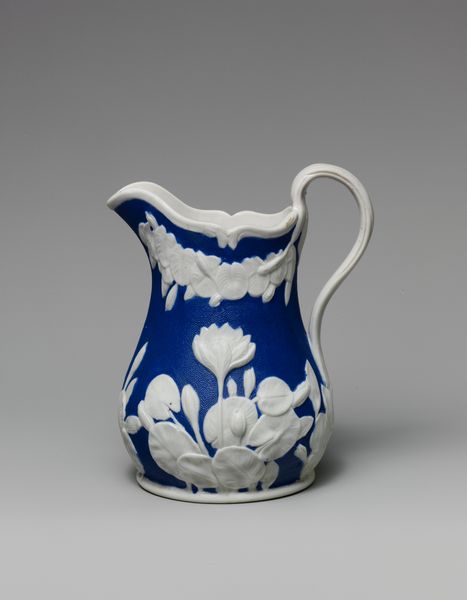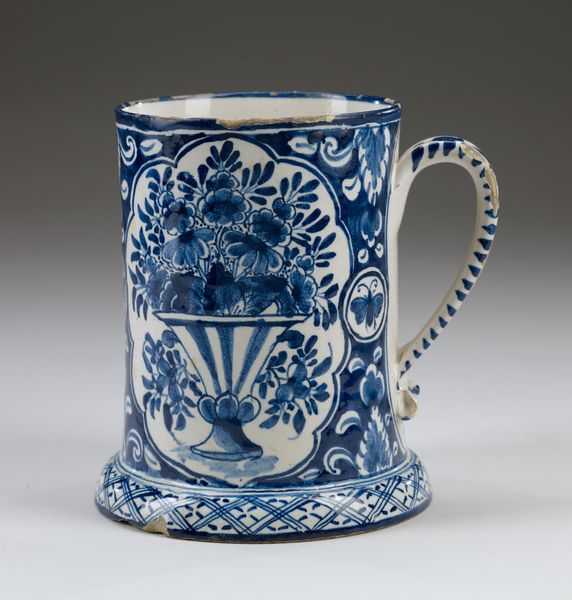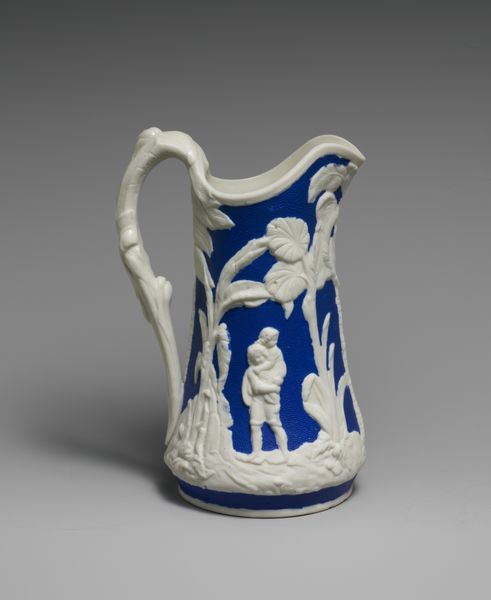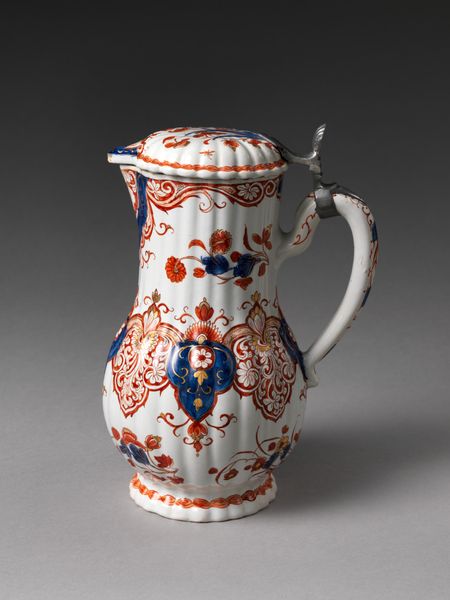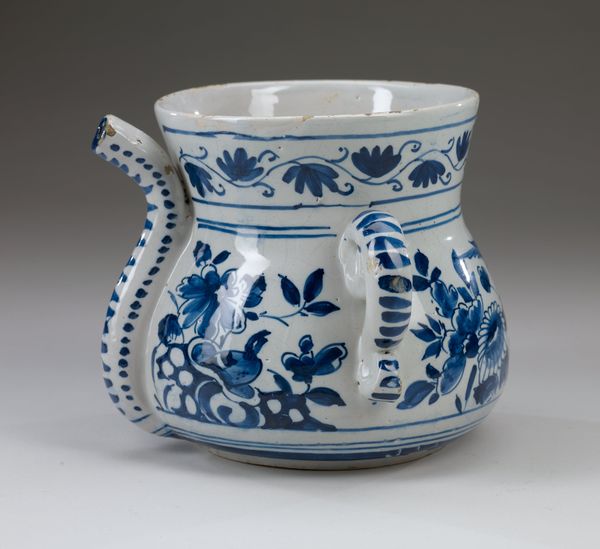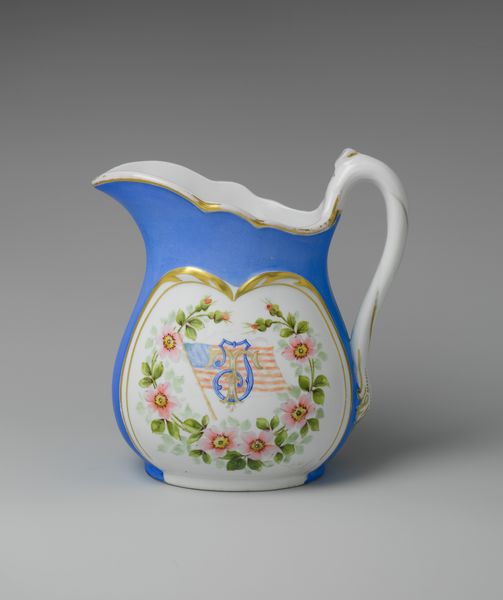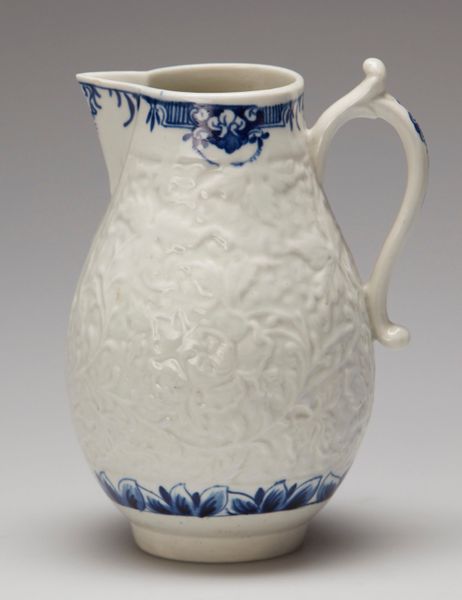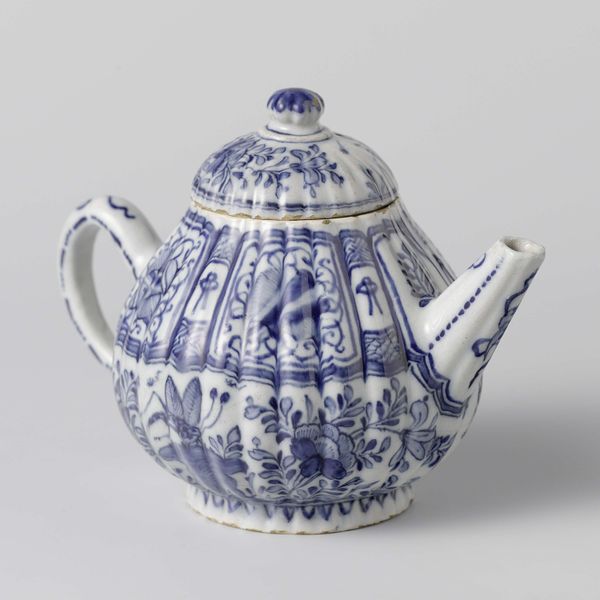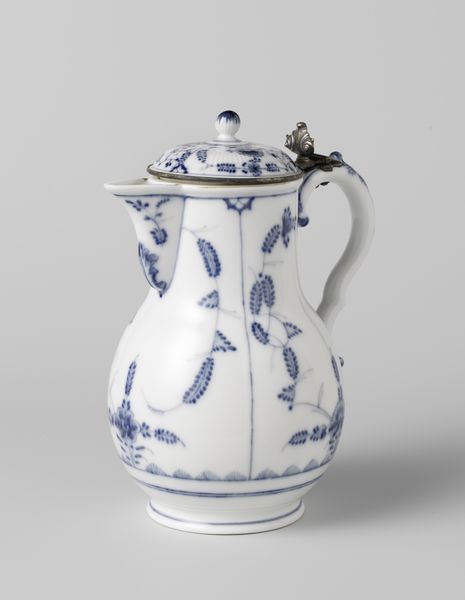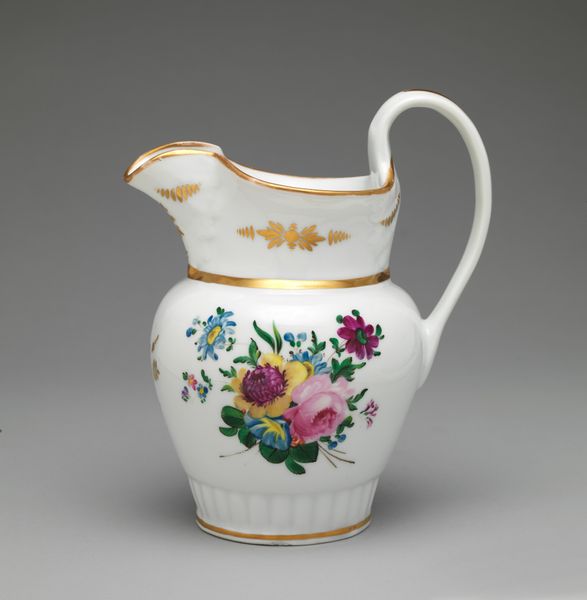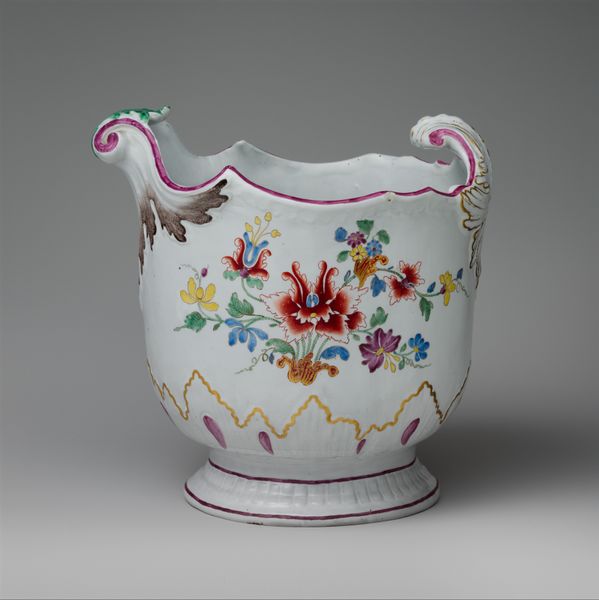
ceramic, porcelain, sculpture
#
baroque
#
ceramic
#
bird
#
round design
#
porcelain
#
sculpture
#
decorative-art
Dimensions: Overall (confirmed): 7 7/8 × 6 3/16 × 4 3/8 in. (20 × 15.7 × 11.1 cm)
Copyright: Public Domain
Curator: Looking at this piece, I immediately feel like I've stepped back in time into a royal blue dream. The fluid shapes, and the almost whimsical use of blue, reminds me of a poem or maybe even a memory. What are your initial thoughts? Editor: Well, let’s consider that this is an ewer, crafted somewhere between 1705 and 1715, making it a piece deeply embedded in the Baroque period and indicative of decorative arts from that era. It is currently housed at the Metropolitan Museum of Art. Think about what porcelain represented during this time. Curator: Ah, you're pulling back the curtain already. For me, beyond its history, the artwork seems very dreamy and calming. What does porcelain tell us about status? Editor: Precisely. Porcelain in the 18th century signified wealth, global trade, and artistic innovation. These objects were political symbols, representing European aspirations to equal the artistry of Asia while simultaneously declaring a distinctly European identity. The blue decorations too – think about how that color was sourced, traded, and its cultural significance. Curator: I like that! To see how even the colour is symbolic of these broader social narratives. The inclusion of the birds brings a unique flair, don’t you think? They almost feel as if they are plucked from the silk screen. Editor: Yes, they provide more insight! Avian imagery often represents freedom, spirituality, or a connection to the natural world. The birds on this ewer likely held symbolic meaning for its original owner, a representation of their worldview, social aspirations, or perhaps personal philosophy. Curator: Fascinating how what appears to be simply a vessel becomes a mirror reflecting larger ideas and ambitions. To really get how its value lies far beyond mere ornamentation! Editor: Exactly! So, while a casual observer might see a pretty object, by examining the socio-political context, we uncover layers of meaning—connecting art history with modern understandings of class, taste, and cultural exchange. Curator: Absolutely. On a final note, even if it had just been “pretty”, it would’ve sparked interest. Knowing about what we have discovered in this discussion only deepens appreciation! Editor: Agreed, it transforms from just another decorative piece into a compelling statement about power, culture, and the complex dance between artistry and ideology.
Comments
No comments
Be the first to comment and join the conversation on the ultimate creative platform.
